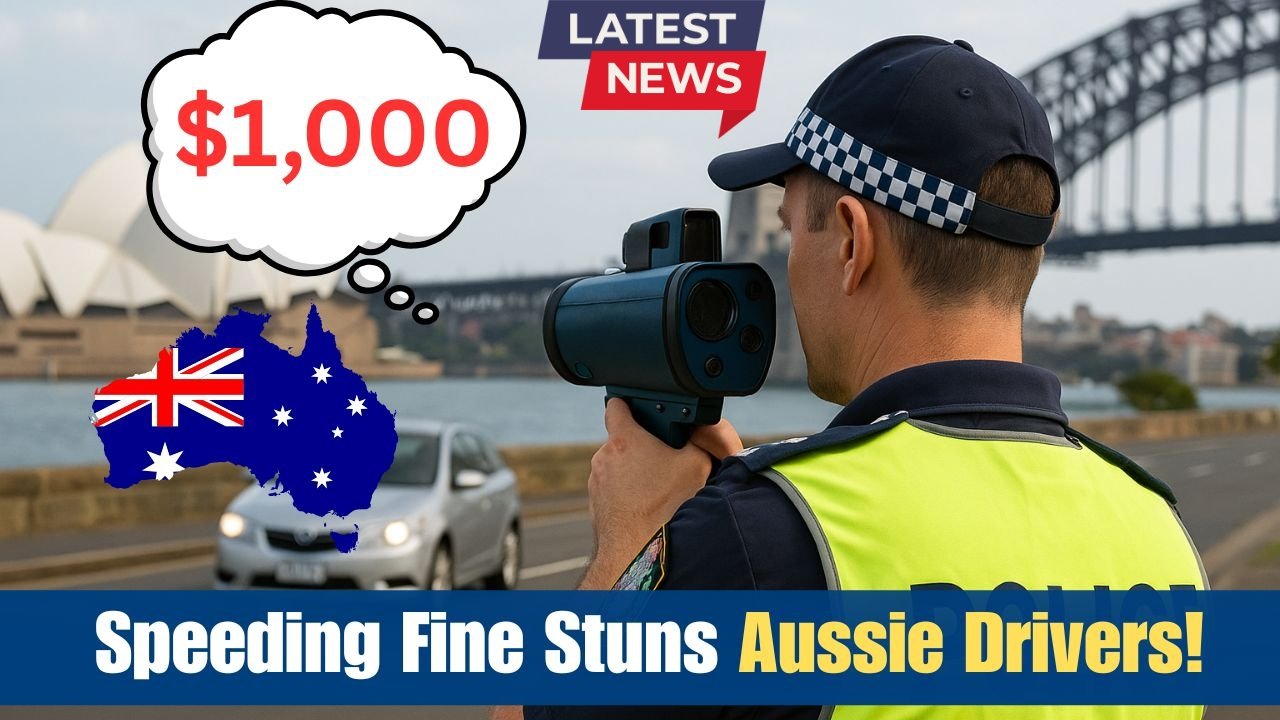Starting October 2025, Australian drivers will experience one of the most stringent statewide crackdowns on speeding ever, with fines of up to 1,000 AED and an immediate loss of driving licence by passing speed limit by at least 45 km/h and 45 km/h respectively. The new traffic offence laws, applicable in all states and territories, categorise such behaviour as major driving offence which gives credence to the governments zero tolerance of extreme speeding and reckless driving.
The Implication of the New Law on Drivers
– Strong Fines: Drivers exhibiting speeding of 45 km/h above the speed limit will attract a minimum fine of $1,000 as compared to the previous fines which were on average 530-700.
– Immediate Licence Suspension: Offenders will be suspended on the spot and will only be reinstated only after receiving the court approval or disqualifiable periods (up to six months).
– Nationwide Enforcement: This legislation is enforced in all of the states of the Australian continent, including New South Wales, Victoria, Queensland, South Australia, and Western Australia, which makes the penalties related to the high-risk driving uniform throughout the national boundaries.
– Repeat Violators: Individuals that violate may get court summons, high fines up to 1500 dollars, and have their vehicles impounded.

The Reason Why Australia Introduced the $1,000 Fine
The reason behind the reforms was the increased road deaths due to over speeding especially in rural and motorway areas. According to the Australian Transport Safety Bureau, the number of drivers who exceeded the speed limit of 45 km/h was close to 15 percent of the fatal crashes in 2024. The government feels that more severe punishment will go a long way to discourage these risky drivers.
– 5x more prone to fatal multi-vehicle crashes are the high-speed drivers.
Most usual involvement is among youth drivers (under 30) and owners of high-performance vehicles.
– Fines will be used to reinvest in road safety initiatives and road safety awareness.
State-by-State Implications
Although the fine of 1000 dollars is standardised, local level enforcement differs a bit:
| State/Territory | Fine Amount (AUD) | Licence Penalty | Added Consequences |
|---|---|---|---|
| NSW / ACT | $1,000 | 6-month suspension | 8–12 demerit points |
| Victoria | $1,000–$1,200 | Immediate suspension | Vehicle impoundment for repeat cases |
| Queensland | $1,000 | Instant suspension | 12 demerit points |
| South Australia | $950–$1,050 | Up to 6-month suspension | Mandatory safety awareness program |
| Western Australia | $1,000+ | 6-month ban possible | Court review for reinstatement |
New Technology and Enforcement
The government is implementing use of AI radar and mobile speed checkers all over the country to apprehend lawbreakers on the spot. These are systems which operate on highways, school areas, and residential areas. By the time of the photo radar integration in 28 October 2025 the tolerance to margin error will decrease further since cases going above the 45 km/h limit will automatically be reported.
Public Response Goals and Safety Goals
Although most drivers think the fine is exorbitant, road safety institutions say that there is need to fight the long-running road trauma in Australia. The policy will also reduce the overall road fatality by a minimum of 20 percent in two years and enhance the adherence to safe-speed limits.
Quick Facts – Speeding Fine 2025
| Rule Aspect | Details |
|---|---|
| Effective Date | 28 October 2025 |
| Speeding Threshold | Over 45 km/h above the limit |
| Minimum Fine | $1,000 AUD |
| Licence Action | Immediate suspension (6–12 months) |
| Applies to | All Australian states and territories |
| Enforcement Tools | AI speed cameras, mobile radar, patrols |
FAQs
Q1. When does the new fine of 1, 000 dollars go into effect?
Since October 28, 2025, in all the Australian states and territories.
Q2. Is it true that my licence will be suspended as soon as I am caught?
Yes. Speeding more than 45km/h results in an immediate suspension of up to six months.
Q3. Is the fine or the suspension appealing?
The appeals should be filed at the local traffic court, although the cases can hardly be overturned because the seriousness of the offence is too high.


